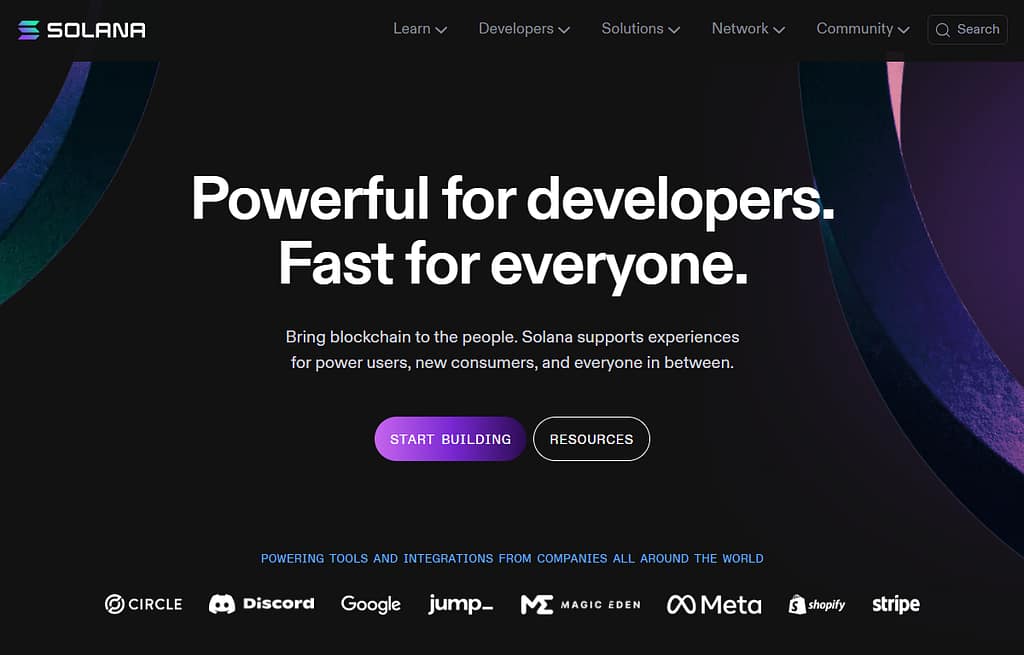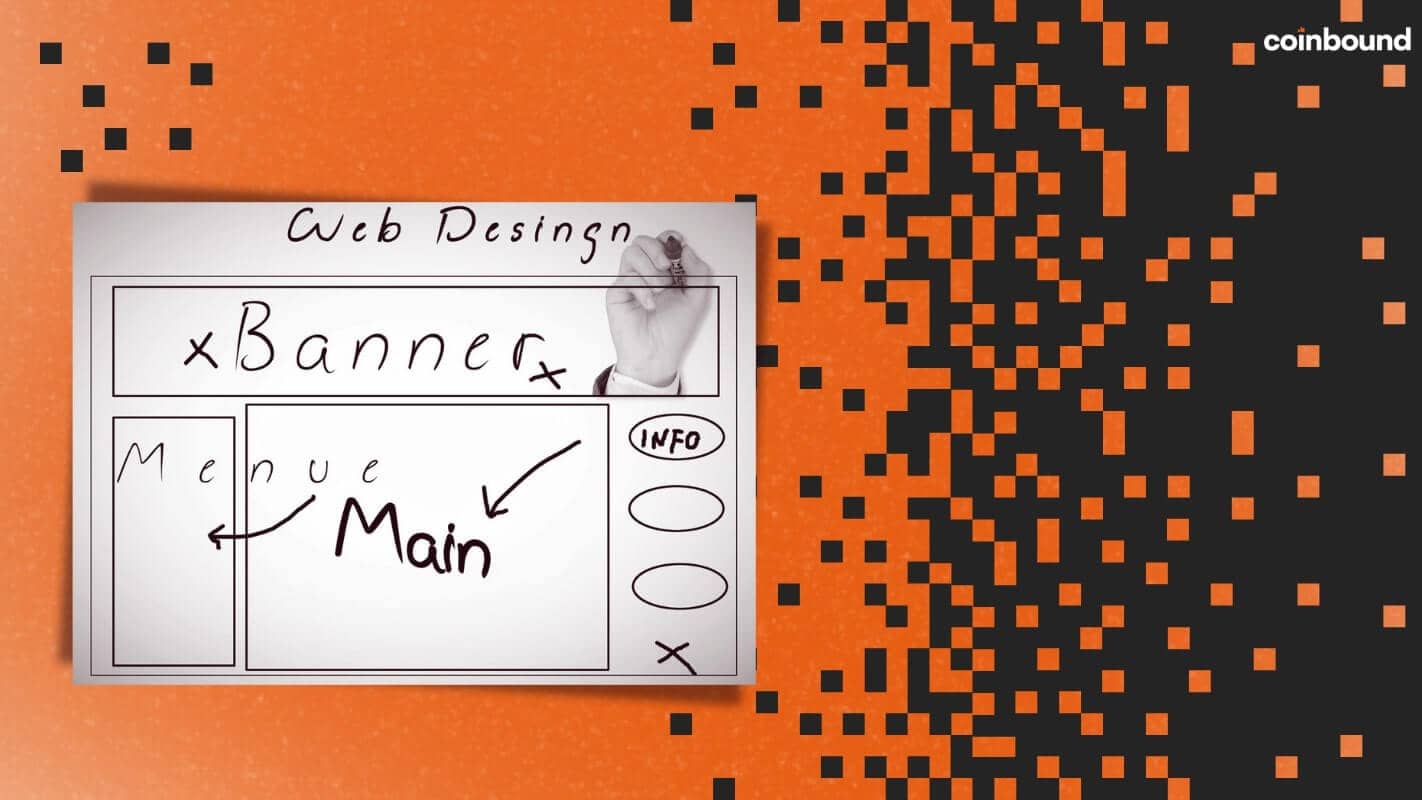Even in a space where whitepapers, Discords, and GitHub repos matter, your website still carries weight. It’s often the first surface people interact with—before they stake, mint, or connect a wallet. That first glance can shape whether someone keeps exploring or closes the tab. And in crypto, hesitation costs you. When someone lands on your crypto site, they are immediately assessing whether your project feels legitimate, secure and worth engaging with. Good design communicates clarity, aligns with your brand identity and simplifies complex blockchain concepts into intuitive user experiences.
IIn this guide, we’re showcasing standout crypto web design examples and examine what sets them apart from layout structure and user flow to visual storytelling and microinteractions. More importantly, we break down practical design strategies you can apply to your own site, whether you are launching a DeFi app, NFT platform or blockchain protocol. And throughout, we spotlight how Inbuco crypto design agency, Coinbound’s creative partner, plays a vital role in bringing high-converting, Web3-native design to life for leading brands in the space.
If you’re rebuilding or starting fresh, this will help you think about your site like the asset it is: not just a front-end, but a credibility layer.
Why Crypto Web Design Matters
In the crypto space, first impressions carry extra weight. With scams, rug pulls and vaporware still a concern for many users, your website has to do more than just look good, it has to instill confidence. The moment someone lands on your homepage, they are making subconscious judgments about the legitimacy, professionalism and credibility of your project. A clean, modern design signals trustworthiness. A clunky, outdated layout raises red flags.
But beyond trust, great crypto web design plays a key role in user education and conversion. Blockchain and Web3 concepts can be complex, especially for newcomers. Your design must bridge that gap by simplifying technical ideas through visuals, intuitive flows and clear messaging. Whether it’s explaining how your token works, guiding users through a wallet connection or onboarding someone to your dApp, your design should drive clarity.
Performance also matters. Many users are accessing crypto platforms on mobile devices or through regions with slower internet speeds. A bloated, slow-loading site not only frustrates users but can also tank your search engine rankings. Lightweight, optimized design enhances both UX and SEO.
Lastly, design supports your brand identity. In a crowded market, a visually distinct, well-crafted website helps you stand out. It’s your chance to make a lasting impression and carve out your place in the ecosystem. When executed correctly, crypto web design becomes a strategic advantage, one that boosts engagement, increases retention and strengthens your credibility from day one.
Also See: Top Design Pickle Alternatives | Best Subscription Graphic Design Services
Outstanding Crypto Web Design Examples
Here are several real-world sites and designs that illustrate how to balance boldness and usability.
1. Solana & Modern Protocol Sites

Web design galleries often highlight Solana’s site as a benchmark for crypto branding and user experience. Its design features bold gradients, clean layouts and fluid animations that strike the right balance between futuristic and functional. What makes it especially effective is how it communicates a complex, technical ecosystem in a visually accessible way. Elements like animated graphs, modular content blocks and interactive developer sections allow different user types — from builders to investors — to find relevant information quickly. This kind of layered design, both aesthetically refined and highly navigable, is a model many modern crypto protocols are following.
2. Crypto Exchanges & Wallets
Sites like Coinbase, Kraken, and Gemini consistently appear in curated lists of well-designed blockchain platforms and for good reason. These platforms prioritize minimalist interfaces, straightforward navigation and frictionless onboarding experiences. Clear calls to action, such as “Buy Now” or “Create Account,” are strategically placed to guide users through complex processes like KYC and funding wallets. Their designs also emphasize trust through the use of secure branding elements, institutional-grade typography and transparent UI flows. For projects looking to scale user adoption, these design principles are key to reducing cognitive load and building credibility from the first click.
3. Web3 design showcase collections
Platforms like Webflow’s “Made in Webflow” collection offer a hands-on way to explore crypto web design in action. These live examples go beyond screenshots, you can interact with fully functional designs, inspect layout structures and even clone them for inspiration or prototyping. It’s a valuable resource for teams looking to speed up their design process while staying grounded in Web3-specific UX patterns.
In parallel, One Page Love curates a selection of one-page crypto websites, complete with full-page previews and detailed feature breakdowns. This is especially useful for landing page inspiration, where concise messaging and visual impact matter most. Whether you are a designer or a founder, both resources help you see what’s trending and what’s working, all without reinventing the wheel.
4. Design portfolios
Behance features many crypto web design projects where designers push visual boundaries—3D elements, interactive transitions, unconventional layouts.
5. Future‑facing Web3 companies
Webstacks recent publication includes experimental layouts, immersive visuals, and community‑centric experience flows.
Also See: Top Crypto Web Design Agencies
What Makes These Designs Work
Behind every visually impressive crypto website is a set of smart design choices that serve both aesthetics and functionality. It’s not just about looking good — it’s about making complex information digestible, establishing credibility, and guiding users toward key actions. Here are the elements that consistently show up in the best crypto web designs:
1. Clear Visual Hierarchy
Top-tier crypto sites organize content in a way that naturally draws the eye. Strong headings, consistent font sizes and balanced spacing make it easy to scan and understand the page. Users shouldn’t have to search for key information — the layout should guide them intuitively.
2. Microinteractions and Feedback
Subtle animations and hover effects provide a sense of responsiveness and polish. Whether it’s a button lighting up on hover or a confirmation message after wallet connect, these small touches reinforce trust and improve usability.
3. Consistent Branding
Color palettes, iconography and typography are kept consistent across all pages. This strengthens brand identity and creates a professional, cohesive feel. The best crypto sites create a visual system that feels instantly recognizable.
4. Trust Signals
Given the risks associated with blockchain and crypto, users look for cues that a project is safe and transparent. This includes audit badges, investor logos, media mentions, or security partner seals, all integrated cleanly into the design without cluttering the interface.
5. Performance Optimization
Many crypto users access platforms on the go or from regions with variable internet speeds. Sites that load quickly, avoid bloated assets, and perform well on mobile devices create a better user experience — and rank better in search engines.
6. Crypto-Native UX Flows
Tasks like wallet connections, token swaps or staking require thoughtful user flows. Great crypto web design breaks these processes into digestible steps, includes visual cues, and adds confirmations so users always know where they are in a process.
By blending clean design principles with blockchain-specific UX needs, the best crypto websites don’t just look great, they build trust, drive conversions and support long-term user retention.
Also See: Crypto Design That Converts: Real UX Decisions Behind Retention
How Inbuco Elevates Crypto Web Design

While Coinbound helps you shape messaging and acquisition, Inbuco can bring that vision into a pixel-perfect reality. Here’s how Inbuco adds value:
- Design strategy aligned with growth goals
Inbuco doesn’t just craft visuals, they map design decisions to conversion and brand metrics. - Seamless collaboration with marketing & dev teams
Design handoffs, style guides and iterative feedback loops minimize friction. - Web3-aware UI/UX
Inbuco blends crypto domain knowledge with usability to avoid confusing users with on-chain jargon. - Scalable systems & components
They build reusable UI components (buttons, modals, input fields) that reduce future maintenance.
If you combine Coinbound’s marketing expertise with Inbuco’s design craft, your crypto site becomes both beautiful and optimized to convert.
Tips to Get Started on Your Crypto Design
- Audit competitor sites and list 3 design features you like.
- Build a mood board of visual inspiration from galleries (One Page Love, Webflow, etc.).
- Sketch wireframes focusing first on flow before stylizing.
- Test prototypes early with users who understand crypto (get feedback on clarity).
- Use design tokens and a modular system to scale.
- Partner with a designer (like Inbuco) who “speaks crypto” — not just graphic design.
If you want help auditing your existing site, or exploring design refreshes, Coinbound can help strategize your entire growth funnel, from branding to conversion.
Also See: Top Crypto Web Development Agencies
Frequently Asked Questions (FAQ)
What’s the difference between “crypto web design” and standard web design?
Crypto web design must prioritize trust and clarity around security, onboarding (wallets), and token flows. Standard design often doesn’t deal with those complexities.
Can I clone a design I see?
You can draw inspiration, but avoid copying outright. Use examples to derive structure, layout, and interaction ideas rather than pixel‑for‑pixel clones.
How much does a quality crypto site design cost?
It depends on scope. For a full site with custom graphics, animations, and crypto integrations, expect pricing in the mid to high design agency range. Coinbound’s advisory work and Inbuco’s design can be packaged to fit your budget.
Which design trends should I avoid?
Don’t overdo 3D effects or embrace obscure navigation metaphors just for novelty. If it hurts usability, skip it.
How will design affect SEO and performance?
Heavy visuals can slow load times, which hurts SEO. Always optimize assets, lazy load and ensure accessibility (alt text, semantic markup). Clean code supports visibility.
Conclusion
Crypto web design is more than just a visual layer, it’s a strategic asset that influences trust, usability and brand perception from the very first interaction. As the Web3 space continues to mature, users are holding projects to higher standards. A well-designed website can be the difference between someone bouncing after a few seconds or becoming a long-term user or investor.
The best crypto websites are built with intention. They combine clear messaging, intuitive UX and brand consistency to simplify complex blockchain concepts and create a frictionless experience. Whether you are launching a new dApp or refreshing your protocol’s homepage, drawing inspiration from proven examples is a smart starting point.
If you are ready to elevate your design but need expert support, Coinbound crypto marketing agency is here to help with creative partners like Inbuco, we ensure your brand looks as good as it performs. From strategy to execution, we are ready to help your crypto project stand out and scale.








